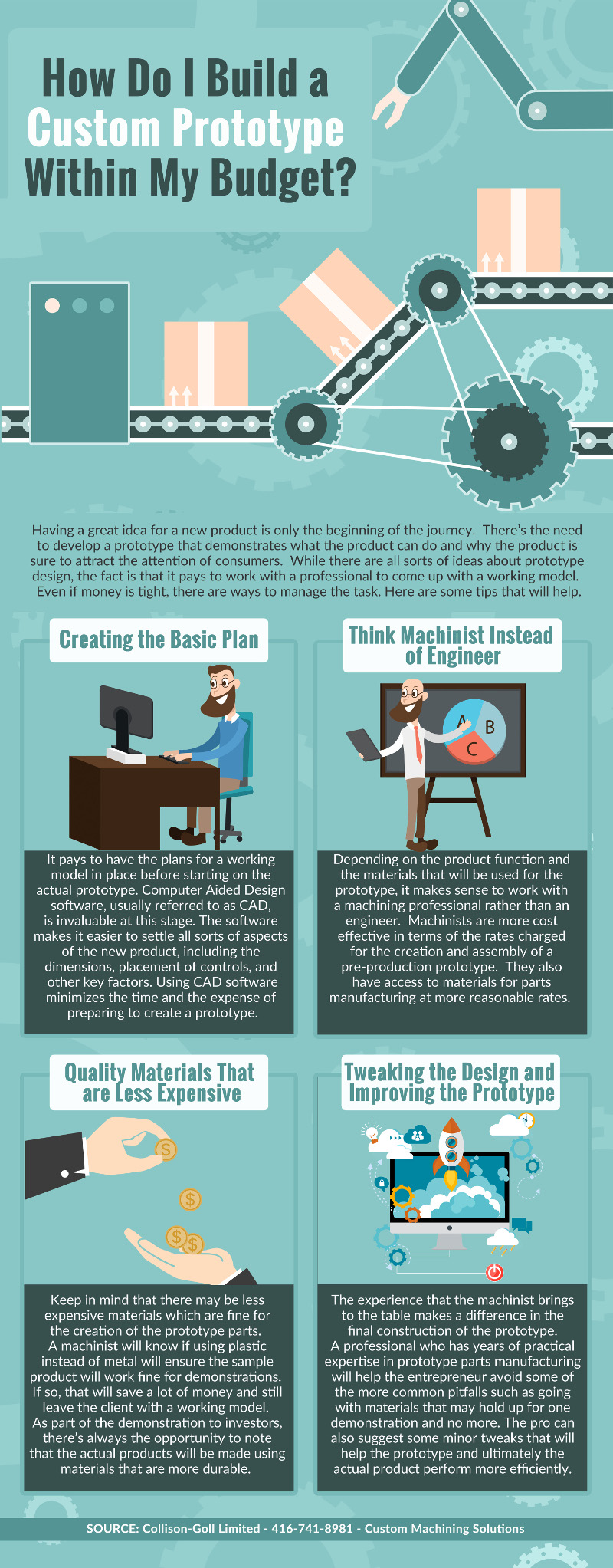How Do I Build a Custom Prototype Within My Budget?

Having a great idea for a new product is only the beginning of the journey. There's the need to develop a prototype that demonstrates what the product can do and why the product is sure to attract the attention of consumers. While there are all sorts of ideas about prototype design, the fact is that it pays to work with a professional to come up with a working model. Even if money is tight, there are ways to manage the task. Here are some tips that will help.
Creating the Basic Plan
It pays to have the plans for a working model in place before starting on the actual prototype. Computer Aided Design software, usually referred to as CAD, is invaluable at this stage. The software makes it easier to settle all sorts of aspects of the new product, including the dimensions, placement of controls, and other key factors. Using CAD software minimizes the time and the expense of preparing to create a prototype.
Think Machinist Instead of Engineer
Depending on the product function and the materials that will be used for the prototype, it makes sense to work with a machining professional rather than an engineer. Machinists are more cost effective in terms of the rates charged for the creation and assembly of a pre-production prototype. They also have access to materials for parts manufacturing at more reasonable rates.
Along with saving money by working directly with a machinist, there is the matter of quality. When the time comes to present this new idea to potential investors, it helps if the prototype provides a good idea of how the finished product will function. Many an investment deal has fallen through because the prototype looked like the finished product but failed to perform well enough to suit investors.
Quality Materials That are Less Expensive
Keep in mind that there may be less expensive materials which are fine for the creation of the prototype parts. A machinist will know if using plastic instead of metal will ensure the sample product will work fine for demonstrations. If so, that will save a lot of money and still leave the client with a working model. As part of the demonstration to investors, there's always the opportunity to note that the actual products will be made using materials that are more durable.
Tweaking the Design and Improving the Prototype
The experience that the machinist brings to the table makes a difference in the final construction of the prototype. A professional who has years of practical expertise in prototype parts manufacturing will help the entrepreneur avoid some of the more common pitfalls such as going with materials that may hold up for one demonstration and no more. The pro can also suggest some minor tweaks that will help the prototype and ultimately the actual product perform more efficiently.
Remember that a functional prototype is more than a visual aid. It needs to prove to investors that the final product will deliver the performance needed to attract consumers and result in sales. Even if the budget is limited, the right machinist can manufacture a prototype with working components and improve the odds of getting the desired financial backing.
